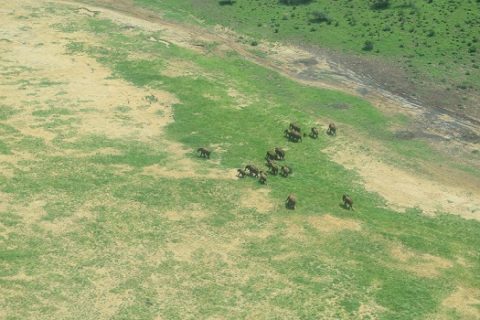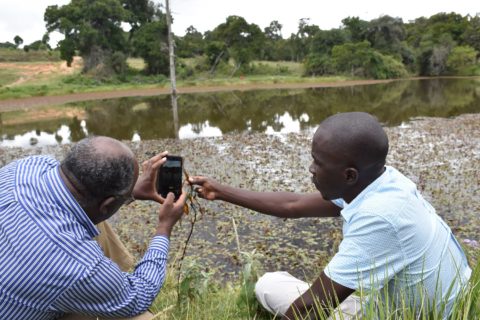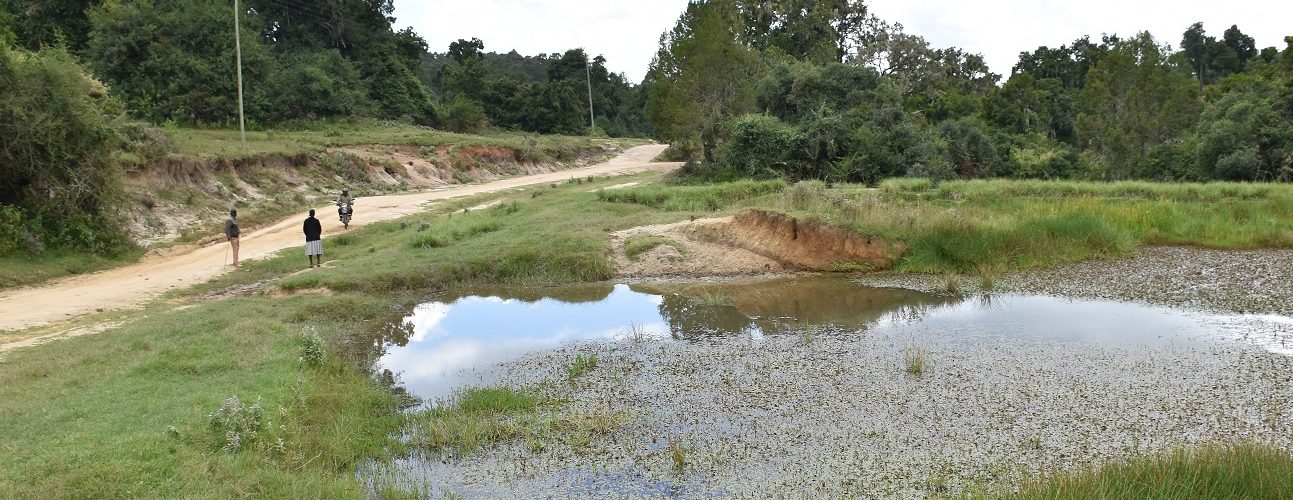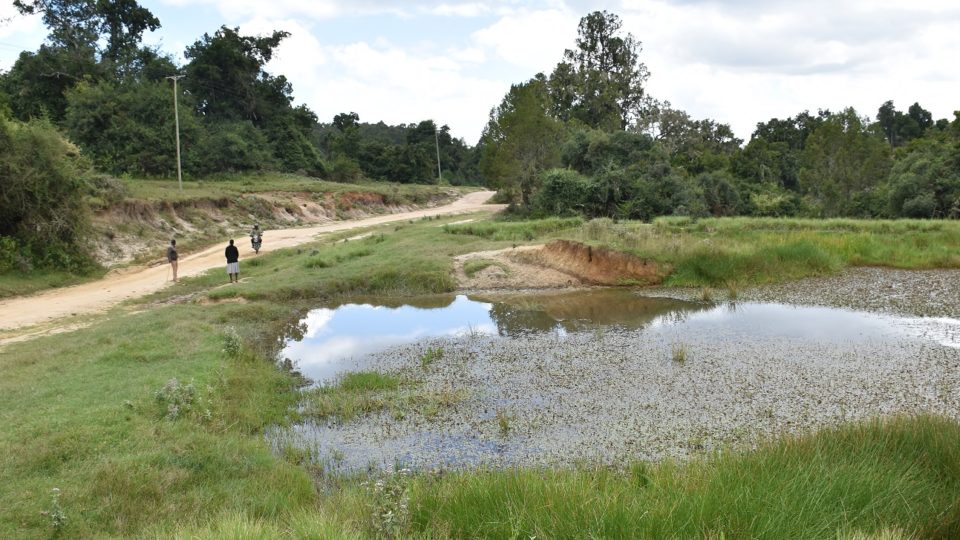Wetlands International is developing an Integrated Wetlands Management Plan for Samburu County for key wetlands found in the mid-catchment area of River Ewaso Ng’iro in Northern Kenya. Originating from the glaciers of Mount Kenya, Ewaso Ng’iro – also known as Ewaso Nyiro – supports both the pastoralist and farming communities as well as biodiversity in the vast arid and semi-arid area. The specific wetlands of interest are Kilele, Kisima and Suguta Mar

Elephant family feeding at one of the marshes in Samburu during the dry season
The management plan will propose actions for joint measures to improve wetlands and water resources management in future. These include screening investments and mainstreaming regulatory and socio-economic valuations in wetlands planning and management through specific environmental tools for ecosystem management.
Earlier in the year, our team conducted a field scoping exercise to understand the extent of the key wetlands by consulting with the local communities, county government and national government officers, and representatives from Civil Society Organisations and the private sector.

Field scoping mission at one of the wetlands
Why a Management Plan for Key Wetlands in Samburu County?
The basis for the development of a management plan is grounded on the following reasons:
- To clearly identify the wetland site management objectives so as to develop an effective management plan. The values of the site and management objectives will help set realistic goals in order to provide a sense of direction, focus and a guide for the actions required. These will be the yardstick by which success can be measured as the plan is implemented.
- To identify the factors that affect or may affect the site’s key features which in turn assist in setting practical objectives.
- To resolve existing or potential conflicts by providing a platform for the communities or organisations with an interest on the wetland. This would help create positive attitudes thus establishing commitments towards future initiatives.
- To integrate disaster risk reduction in the planning by not only assessing current and immediate risks, but also future risks where climate change at the larger landscape level is a defining factor.
- To assist in mobilizing financial resources through identification and quantification of the resources required to manage the wetland as well as to determine income generating opportunities to support the necessary management processes.
- To aid communication and collaboration within and between wetland sites, organisations and stakeholders. Management planning processes provide an important means of involvement and communication with the stakeholders.
- To ensure compliance with local, national and international policies.
Wetlands International is dedicated to the conservation and restoration of wetlands globally. We do this by understanding and addressing the underlying causes of wetland damage and loss through management planning. These processes help strengthen the technical and institutional capacities for sustainable wetlands management in the region.
In Eastern Africa, we have been involved in various wetlands management planning processes such as the Tana River Basin and Lake Naivasha in Kenya; an integrated catchment management planning for Jigijiga in Eastern Ethiopia and Aswa in Northern Uganda with subsequent development of their atlases; Kinnaite in South Sudan; and the Rufiji Delta mangroves in Tanzania.
We have also supported in the development of monographs, wetlands management plans and investments project plans for Wetlands Across Borders in the Nile Basin.

